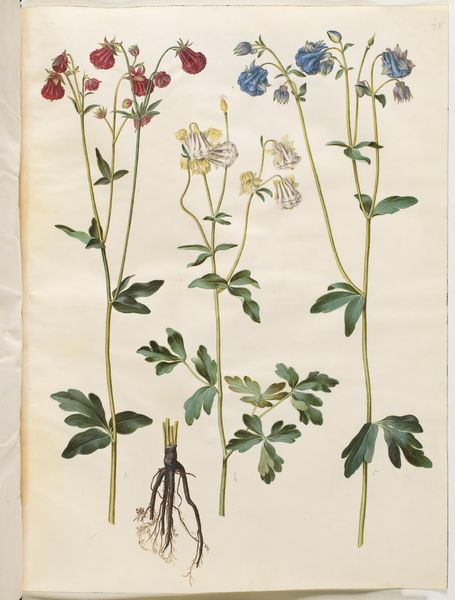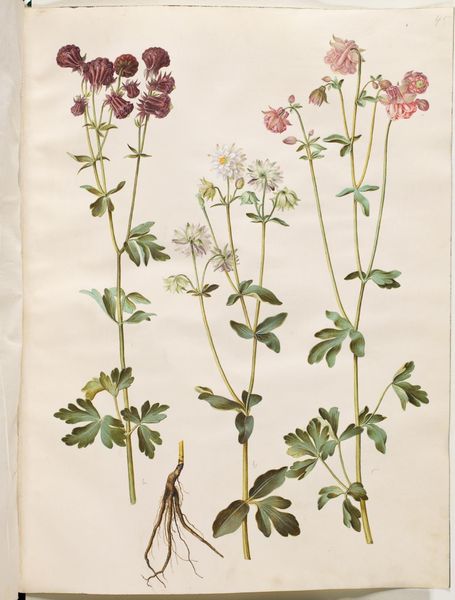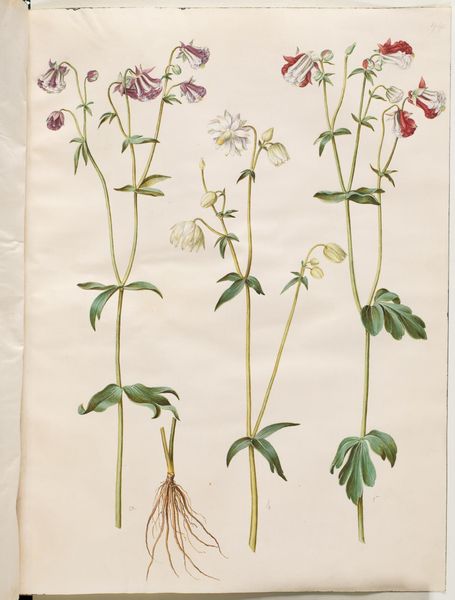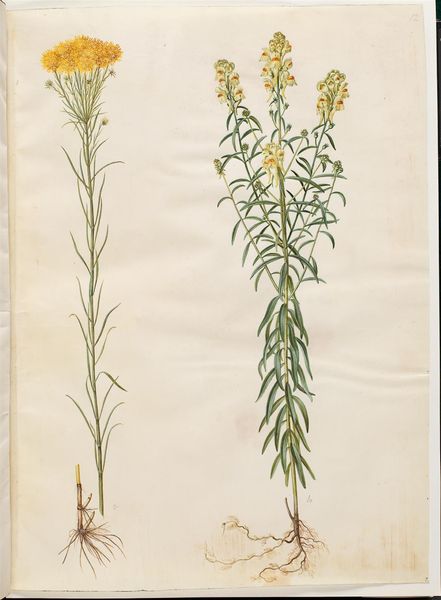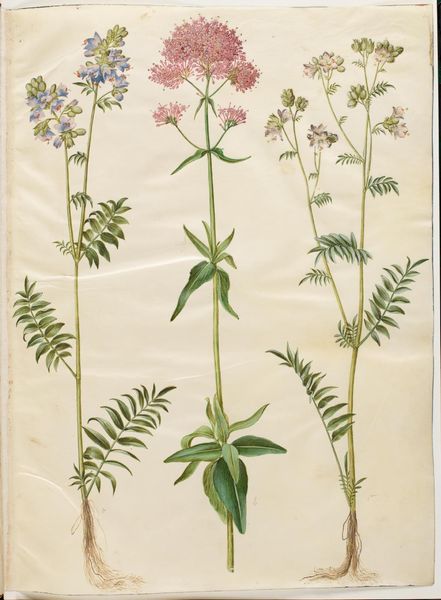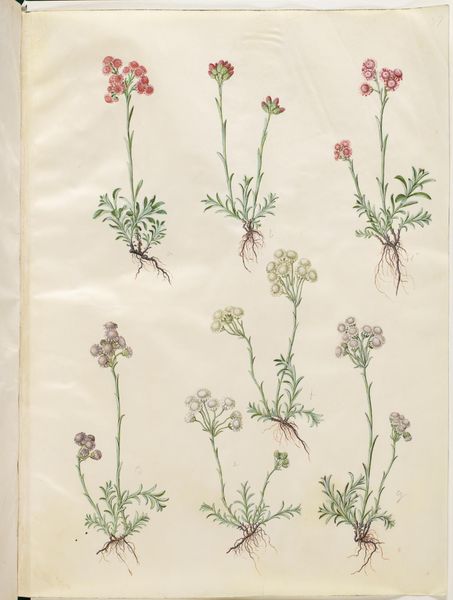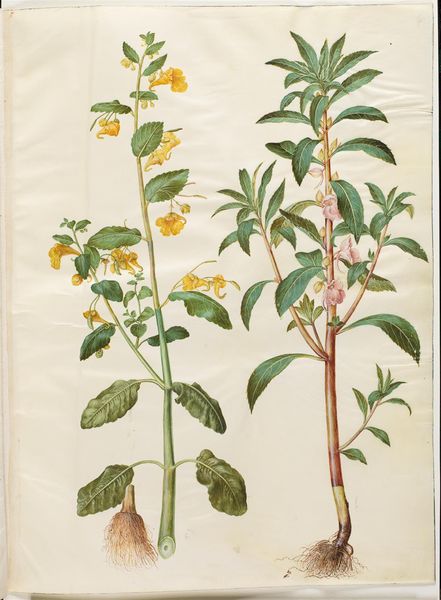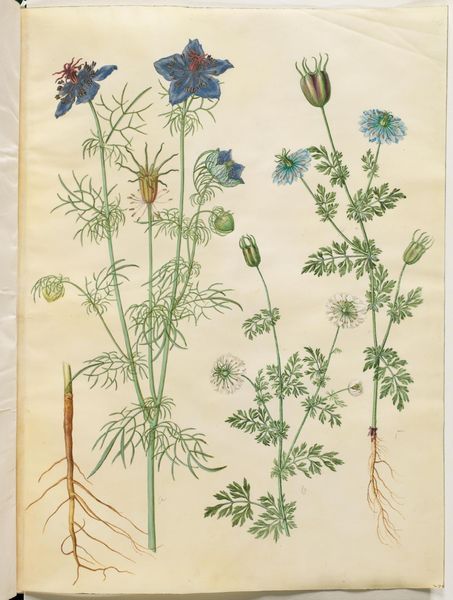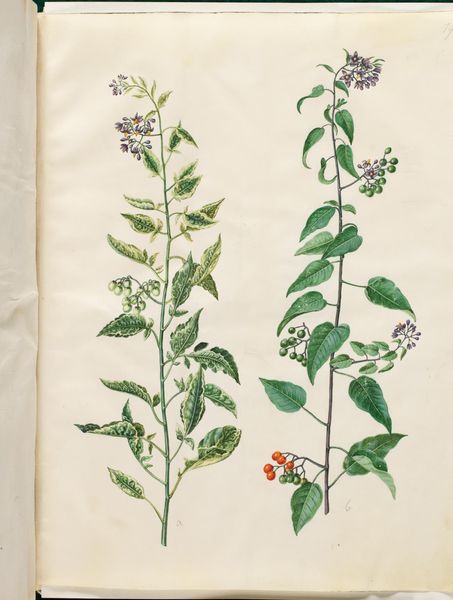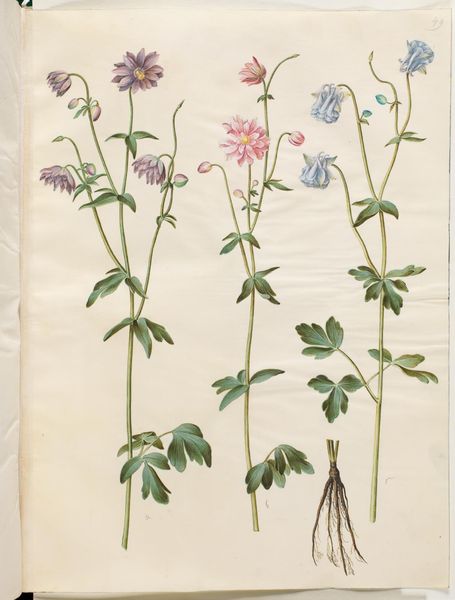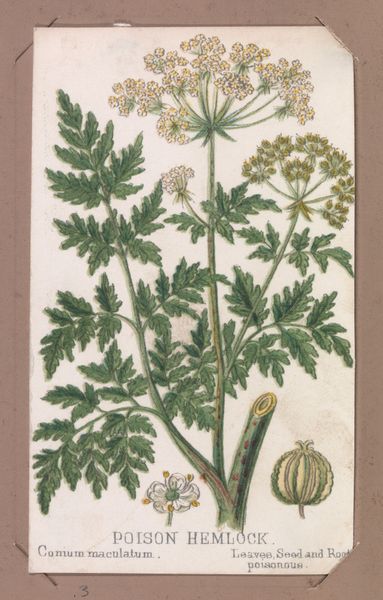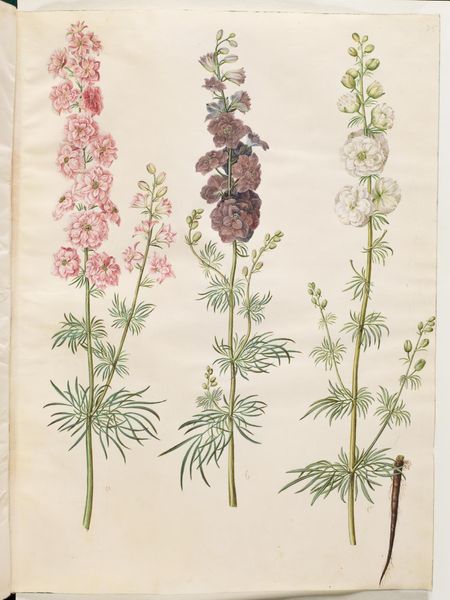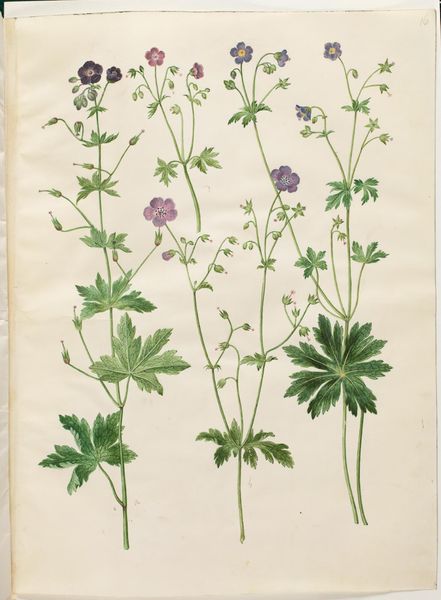
Adonis annua (høst-adonis); Adonis aestivalis (sommer-adonis) 1649 - 1659
0:00
0:00
drawing, gouache, watercolor
#
drawing
#
water colours
#
gouache
#
11_renaissance
#
watercolor
#
botanical art
Dimensions: 505 mm (height) x 385 mm (width) (bladmaal)
Curator: Here we have Hans Simon Holtzbecker’s "Adonis annua (høst-adonis); Adonis aestivalis (sommer-adonis)" dating from the mid-17th century, sometime between 1649 and 1659. The medium is listed as drawing using watercolors and gouache. Editor: My initial impression is one of gentle precision, like a botanist's loving record. There’s a quiet dignity in these renderings of delicate, fiery blooms and feathery leaves, almost as if each plant holds a secret. It’s hard to believe something created that long ago still whispers. Curator: Whisper indeed. Consider the labor that went into each stoke of gouache, mixing pigment, grinding, the repetitive motion – such handiwork is beautiful, especially considering the plants that would then be studied. The plant life here are presented like scientific specimens as well as small gestures of fleeting beauty, aren’t they? Editor: Absolutely. It makes me wonder about Holtzbecker’s studio, the kind of light needed, his workspace. What brushes and papers were available at the time? Did he feel joy capturing their likeness? Or was it commissioned work, part of a bigger system? I find myself always drawn to these sorts of questions… to look for answers through material analysis of art history, and consider not just “art” but all the objects produced, exchanged and consumed at a specific time. Curator: All this art feels quite humble but I think that gives it some appeal. Like a snapshot, that just is there without being boastful, not like other drawings using water colors from the time, or the portraits of course. And it brings forth the temporality. Even now looking at the flower in this botanical drawing is kind of painful because it won't be that vivid soon enough. Editor: In a way, Holtzbecker reminds us that both the process and subject matter of art are rooted in labor and natural cycles, revealing its essential connections to social life beyond gallery walls. Curator: Seeing such art does leave you filled with contemplation. Editor: A testament to his quiet dedication and its reverberations today, even through something like a botanical record that speaks volumes.
Comments
No comments
Be the first to comment and join the conversation on the ultimate creative platform.

